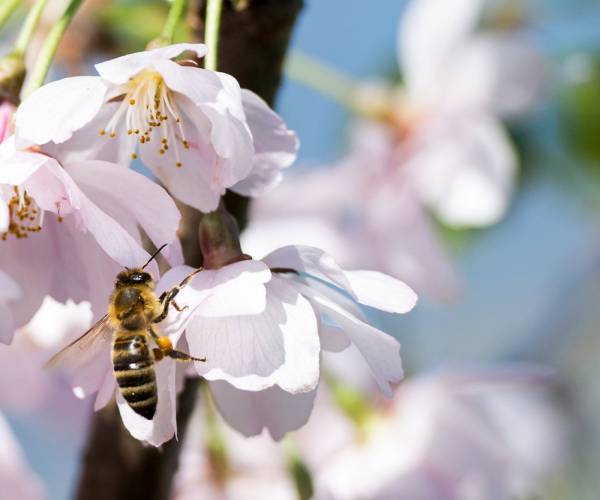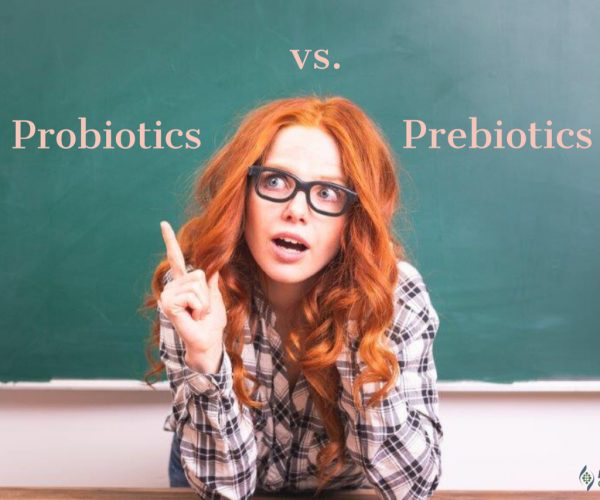General questions about EM and microorganism complexes
What are effective microorganism preparations?
Liquid solutions of living microroganisms that rebalance disturbed biological areas (milieus, microbiomes). They are produced by a special fermentation process in our manufactory. They consist of water, sugar cane molasses, lactic acid bacteria, yeasts, phototropic bacteria, enzymes and antioxidants.
Is MikroVeda a producer or distributor of microorganism preparations?
MikroVeda is an authorized, long-term producer of so-called stock or primal solutions as well as ready-to-use solutions with effective microorganisms.
Are the preparations safe?
Yes, they are made of non-toxic microorganisms. They are also not genetically modified. Most strains come from food production (e.g. yogurt, cheese, buttermilk, sour cream, bread, beer, wine, etc.).
Who invented EM technology?
It was not invented, because it is not a technical product. As early as the early 1960s, it was discovered that certain microorganisms have great potential for coexistence. A group of scientists around the Japanese company Sanko Sangyo Ltd. (“Mother of EM Technology") introduced the first product in 1982 after a long period of research.
How can we describe the so-called dominance principle of microorganisms?
Opportunistic microorganisms make up the largest group. They follow the group that is predominant in a system. When degrading, problematic microorganisms become predominant, the opportunists follow this process and an environment is created in which degradation and degeneration predominate. When anabolic microorganisms take over, the opportunists follow this anabolic process and an environment develops in which anabolism and regeneration prevail. Which type of microorganisms becomes predominant is highly dependent on the environment, the milieu in which they live. For example, agriculture: if synthetic chemical “fertilizers" and pesticides are released into the environment as a result of non-natural agriculture, degrading (degenerating), undesirable microorganisms will predominate, which can cause numerous diseases.
How can the fermentation principle be described?
Natural microbial processes take place everywhere on our planet Earth. For example, waste materials are broken down and mostly degraded, converted and rebuilt into useful substances. In a low-air (anaerobic) maturation process, certain microorganisms break down complex organic molecules into simple organic and inorganic substances. These can be immediately absorbed by the plant. Microbial metabolic processes also produce metabolic products valuable to plants, such as hormones, vitamins, enzymes, antioxidants, and so on. They stimulate the soil organisms (edaphon), but also the plants themselves, thereby promoting their growth and strengthening their natural resistance. As a result, plant diseases and pest infestations can be suppressed.
Will sunlight and high temperatures damage the microorganism complex?
No, as the packages are well packed and therefore not exposed to direct sunlight (inside the carton) and are insulated by the carton and packaging material (temperature), no difficulties are to be expected. Our preparations have been shipped to private customers in Scandinavia for years, even during the winter. We also choose dark bottles for our products so that they receive little light if they are left in the sun for a short time. However, we recommend not to expose the bottles to sunlight for a long time and to store them protected from heat (above 0°C and below 30°C).
Questions about microorganism preparations for humans
What is the difference between MikroVeda Life and Life Pur?
Both are dietary supplements with MikroVeda microorganisms, the Glossy Lackporling (Ling Zhi mushroom) and O.P.C. from grape seed flour. The MikroVeda Life was also produced with selected certified organic herbal and plant parts.
Do the good bacteria enter the intestine via gastric acid?
The answer is clearly yes, this is even quite natural and happens all the time. For many bacteria this has already been scientifically proven (e.g. probiotic bacteria), for many others this can be assumed. Bacteria do not possess the protection against gastric acid from the outset. Some cultures can become sporulated for protection. If this were not the case, our microbiome would also suffer constant poverty. Our body (or gut) relies on both micronutrients and a constant supply of bacteria. Usually this happens through our food and drink, through our breathing they also enter our mouths, through human contact, etc. Our body has also been adapted to this supply over the many thousands of years (keyword: evolution). So you will also have very large similarities in your microbiome in your family (the similar diet, the similar indoor air, proximity, existing microbiome at birth). If the supply of bacteria were naturally sufficient, e.g. through our diet, there would be no need for supplements to support it. A century ago, for example, many crops were still full of good bacteria, so that no bacterial starter was needed for sauerkraut fermentation. Unfortunately, this is different today. But microbiology still has so much research potential here.
Do ALL the good bacteria get into the gut?
If all bacteria get into the intestine, i.e. 100%, then this cannot be confirmed. But this is also not necessary. Enough bacteria enter the intestine to naturally expand your microbiome. Enzymes and bacteria already enter your body when you take microorganism preparations, as soon as the liquid comes into contact with your oral mucous membranes, then there are also gastric mucosa, esophagus, lips, skin, and so on. However, you can support the “passage of bacteria" specifically to the intestines by taking the enzyme ferment between or just before meals. There the stomach acid is more “bacteria friendly". During the meal it becomes more unfavorable from the mileu, in order to kill as many foreign bacteria as possible, which are not intended for the human microbiome. But even here the body does not manage to kill 100% of harmful germs. The immune system has to take care of the rest. Regardless of this, you could take our preparations during meals without any concerns. Why this is the case is explained below under strains vs. germ count (In advance: Based on our experience, the only decisive factor for the microbiome build-up is that a certain minimum number of bacteria is introduced. The rest will take care of itself naturally).
What is the difference between bacteria in capsules and a liquid ferment like the MikroVeda Life and Life Pur?
The bacterial cultures specified in our liquid ferments are well fed, active and have already been living for many weeks in a functioning community and in a bacteria-friendly milieu. Functioning community here also means successful assertion in a limited habitat. The MikroVeda Life, for example, offers active, numerous and strong culture strains, all naturally organic and GMO-free in an existing, liquid milieu.
In this state, they are introduced into your body holistically by ingestion, so they do not only enter the intestines, but already act through the mucous membranes. They therefore colonize the entire space they pass through (oral cavity, pharynx, esophagus, stomach and finally the intestine).
The MikroVeda Life also has additional substances through the fermented herbs and plant extracts – compared to the Life Pur. This fermented herbal extract has likewise already benefits in the oral cavity.
Other differences compared to the capsule:
The dosage can be adjusted to the needs of the user between a few drops for the beginning up to 25 ml daily. Thus, even very sensitive or sick people can ideally adjust their personal dose.
Many customers also use MikroVeda Life for external care if there are inflammatory problem areas on the skin. For this purpose it can be sprayed on or applied to the skin with a cotton pad.
There are no side effects with our products.
In our view, capsules offer four rather practical advantages, both from the customer’s and the manufacturer’s point of view. There is the cheaper production (especially for mass), the uncomplicated intake and then the easier take along as well as storage after opening compared to the MikroVeda Life/Life Pur. The fourth advantage is psychological. The user often associates capsules with something medical. The fact that a capsule with contained bacteria must survive gastric acid may be an indication that the cultures contained therein are also dependent on the protection or need it to ensure the likelihood of sufficient activity in the intestine.
Bacteria in capsules usually originate from freeze-dried cultures that are purchased in powder form. The question in relation to the bacterial count is here, how many of the good germs filled in the capsule (contained in the powder) then actually become active in the intestine on contact with liquid and sustainably assert themselves in the microbiome? No one will be able to answer this question, just as we unfortunately cannot guarantee that, for example, XX% of the contained germs will survive the gastric acid barrier. Based on our experience, the only decisive factor for the microbiome build-up is that a certain minimum number of bacteria are introduced and can thus regeneratively expand the microbiome. The microorganisms present in the intestine can reproduce at such an enormous speed if they have “food" (keyword: nutrition!) and assert themselves in the limited habitat.
Nutritional supplementation in the form of bacterial cultures is ultimately very individual, if in doubt we would always recommend simply trying a product. If it helps and supports, then you should consider continuing to use it.
What is the difference between probiotics, prebiotics and microorganism complex?
Probiotics: Gut microbiome-building, beneficial microorganisms that occur naturally. Found in yogurt, kefir, sauerkraut and in dietary supplements.
Prebiotics: Short-chain sugar and protein molecules from food that are indigestible (dietary fiber) and serve as food for intestinal bacteria.
Microbial complex: Communitization of both probiotic and ferment-active bacteria, as well as valuable yeasts and sometimes photosynthetic bacteria.
Can I take the MikroVeda microorganism preparations for problems with gums and teeth?
Our microorganism preparations for ingestion for spraying or drinking are adapted to the sensitive mucous membranes and the condition of teeth and gums. The good bacteria can enrich the bacterial environment in case of problems of any kind in the oral cavity and thus contribute to a balanced microbiome in the mouth. It is a natural product without artificial additives and no side effects are expected. Our recommendation for problems in the oral cavity: do not take directly before or after brushing your teeth and start with a small dosage of a few drops. It is also suitable for rinsing the mouth.
What to do if the digestion reacts very strongly to the intake of the microorganisms?
Start taking the microorganisms with a low dose of a few drops and increase it according to your sensations. Your digestion will adapt and you will feel an improvement after a few days. It should be noted: taking good bacteria increases stool volume. This is a desired healthy effect!
Can MikroVeda microorganism products be taken by children?
Yes, all our fermented liquid enzymes are purely natural and can be taken by young children without hesitation from the time they are given solid food. However, pay attention to the note that a food supplement should not get into the hands of small children, as they are not allowed/able to dose themselves. The intake by children should therefore always be accompanied by an adult and adjusted to the body weight of the child. Thus, children should start with a few drops and increase the dose according to their well-being. A “too much" is only noticeable in a “too good" digestion.
Can I take the microorganism preparations in case of histamine intolerance?
Yes. When taking our preparations, no problems with histamine intolerance are to be expected. Histamines that may be produced during fermentation are below the threshold levels in our products with even less than 0.25 mg/L.
What is the difference between MikroVeda fermented beverages as a dietary supplement and sauerkraut juice or other fermented beverages?
They are fundamentally different products. 1) Some are sterilized, so you can already assume that there are no or very few live bacteria in these products that the gut microbiome so desperately needs. Our fermentation products are raw and not sterilized or pasteurized. 2) The microorganisms in our products are selected, specially communitized, and form an attuned environment that enables them to settle in and begin functioning in the body immediately after ingestion. In the case of wild fermentation such as sauerkraut, for example, this prepared milieu and the coordinated microorganism complex are not present. Kombucha, for example, contains only the special kombucha fungus as the effective microorganism. Still other fermented beverages rely on lactic acid bacteria in detail and thus cannot provide a microorganism complex adapted to the complex intestinal environment. 3) Many fermentation products must be refrigerated or have a shelf life of only a few days after opening. This is because undesirable bacteria could quickly spread. Our fermentation products are cleanly fermented and guarantee a long shelf life of at least 4 weeks even after opening. However, be sure to supplement your diet with your own fermented foods or yogurt, as these can provide a good base for taking a MikroVeda supplement. However, make sure to ferment your own fresh ingredients to avoid additives from the industry.
In summary: Our supplements are allergen-free, non-sterilized and have been used successfully on a therapeutic scale for many years. They therefore serve as targeted “microbial starters" for humans.
At what time of day does it make sense to take MikroVeda fermentation products?
It is best to take our fermentation products in conjunction with meals. Whether shortly before or shortly after a meal is irrelevant and should be chosen individually according to how you feel. Just plan enough time before going to bed, as our ferments are digestive and you should therefore plan to go to the toilet. During the night there should be a break from food so that the detoxifying organs such as the liver can work in peace and the good bacteria in the intestines can spread and multiply.
If you’d like to learn more about intake timing, check out this blog article!
Microorganisms products for garden and plants
What is the difference between MikroVeda Stock Solution and Stock Solution Plus?
In addition to numerous lactic acid and other microorganisms, the stock or urine solutions also contain so-called photosynthetic bacteria. Two types of these have proven to be very effective for our technology. In the conventional MikroVeda stock solution there is one species, in the MikroVeda stock solution Plus there are two species. The combination of the two species significantly increases the effectiveness of mass transfer and purification processes. The MikroVeda Stock Solution Plus is therefore preferred for such applications.
What is the difference between the stock solution and a finished product?
A stock solution is produced from individual microorganism seeds in each case using a very special process that is only accessible to very few experts. We have mastered this technology. Finished products are called preparations, which are professionally produced from stock solutions by our experts.
What is the difference between a professionally prepared ready-to-use solution and an activated solution that can be prepared by laypersons according to a free formulation?
Our professionally produced ready-to-use solutions have a significantly longer minimum shelf life, up to one year when sealed. Our ready-made solutions are produced with a high standard of hygiene by our specialists with many years of experience under optimal manufacturing conditions.
Can the MikroVeda Terra also be used for composting?
Yes, it is not only an excellent soil conditioner, but also an almost optimal compost starter. The Effective Microorganisms in this preparation stimulate and strengthen the organisms in soils, plants, plant root spaces sustainably as well as on other organic materials of all kinds and in all milieus.At the same time, they also become active here and trigger numerous metabolic processes that lead to degradation, transformation and rebuilding processes up to the formation of humus. In addition, they are actively absorbed and metabolized by the plants through the process known as endocytosis via the plants’ fine hair root system.
With which product and how can I take care of my garden pond and prevent excessive algae growth?
Our special preparation for outdor water and water organism care is MikroVeda Pond. It is explicitly not an algaecide, but a care preparation. It supports the metabolic processes of many aquatic animals and plants, strengthens their immune system and thus their vitality and reproduction potential. It stimulates established water microorganisms to break down metabolic products from e.g. fish excretions more quickly, up to the nitrate stage. From here on, the polluting nitrate can be easily absorbed by aquatic and marsh plants, so that nuisance algae can no longer take it up in sufficient quantities. In summary, regular use of MikroVeda Pond sustainably strengthens the pond biocoenosis.
Microorganisms preparations for the household
Bokashi: After what time has the kitchen bokashi in the soil become soil?
At summer temperatures after about two weeks, at cooler temperatures after about a month or a little longer. This depends on the further activity of the effective and other microorganisms and larger soil animals, such as the earthworm. Kitchen bokashi is produced in the bucket largely in the absence of atmospheric oxygen (fermentative-anaerobic). Therefore, after completion of fermentation, it still retains some of its original shape and color. Only after the material in the soil meets atmospheric oxygen and the soil organisms have built it with soil fine crumbs (alive), it resembles a conventional compost.
Which preparation is the best way to eliminate unpleasant odors?
In principle, with all preparations except dietary supplements and supplements. Activation of the MikroVeda Plus stock solution has proved particularly effective.
With what preparation and how to carry out mold control?
In principle, with all preparations except dietary supplements and supplements. Activation of the MikroVeda Plus stock solution has proved particularly effective.
Bokashi: What organic waste belongs into kitchen bokashi and what does not belong in it?
Basically, this is organic waste (everything that was once alive) that is generated during food preparation or as leftovers. This includes, among other things, fruit and vegetable waste, potato scraps and also waste produced during fish preparation. Organic material also includes wood and paper, but these should not go into the organic waste garbage can. The contents of tea bags and coffee grounds can be placed in the bin without any problems. Of course, metals, crown caps, plastic and all inorganic material have no place in such a bucket.
Is the contact of the household remedy of MikroVeda with the skin or mucous membranes dangerous?
No. Any contact with skin and mucous membranes is harmless. Our household preparations are fermented on food basis.
MikroVeda fermentation products for skin and hair
Can the microorganism preparations for drinking also be applied/sprayed on the skin?
Yes. Sore, rough, sensitive skin areas can be treated with our good bacteria. Many of them are involved in skin regeneration processes and thus can enrich and support the existing skin microbiome.
Popular Posts

Microbiome Balance on the go
Time for holidays – The microbiotic mouth spray M33+ with you on your travels. More than ever, we long for…

Microbiome Balance for horses
Feeding, care, stable cleaning, pasture management – a comprehensive, organic concept for your horse! A horse of your own –…

Bee care completely without chemicals?
A brief introduction for the occasion: May 20 is World Bee Day! On the occasion of this day, it is…

Naturally support worming treatment in dogs and cats
Veterinarians recommend: Dogs and cats should be wormed regularly, it is part of the annual routine for us pet owners.…

Microbiome, fatigue, depression – How our bacterial diversity affects our mind!
From fatigue, exhaustion and listlessness to depression: How do spontaneous or often permanent mood states come about in the first…

Garden start March-April in Germany: What to do now?
The first rays of spring sunshine and it draws us garden friends out into the green. Since there is not…

At what time of day should I take the MikroVeda microorganisms?
Dietary supplement before or at mealtime? Liquid ferment as a dietary supplement at any time of day? What should be…

Remove adhesive residues from tiles, MikroVeda Lifehack with Blond or Clean
Lifehack report “Good bacteria in use”: That moment when you want to take the bathroom mat aside and it sticks…

What is the difference between probiotics and prebiotics?
Current knowledge teaches us in our everyday nutritional teachings that we should consume both pro- and prebiotics to support healthy…

